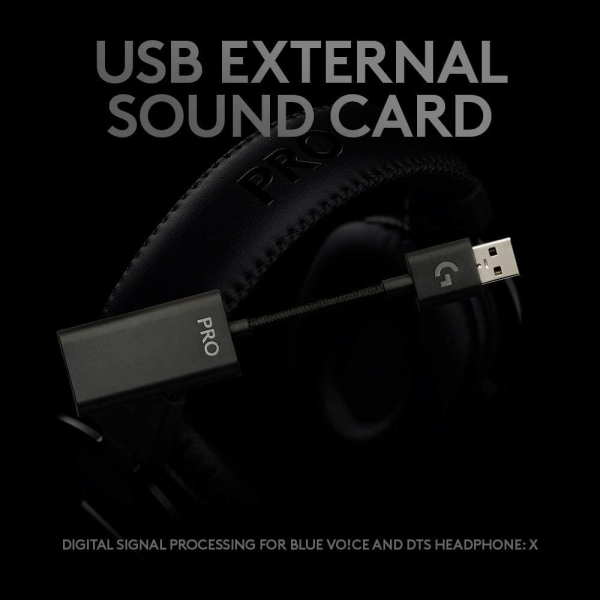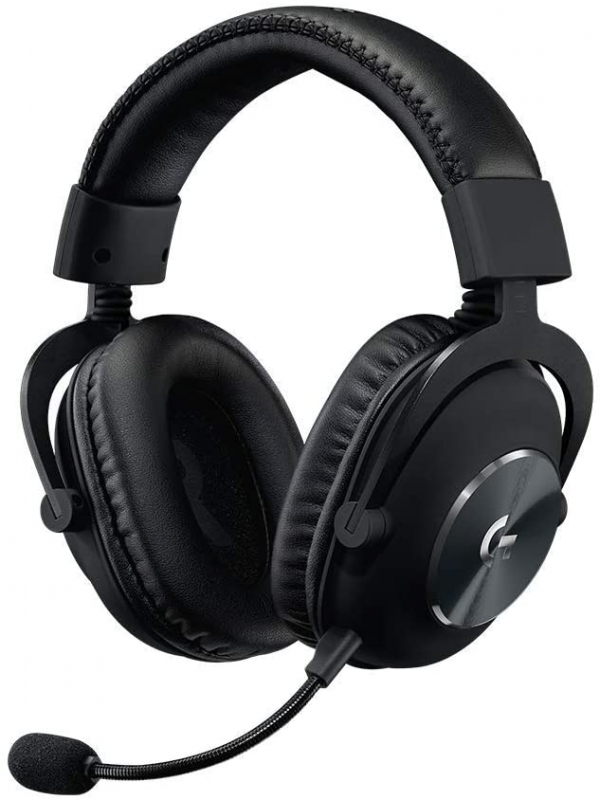Logitech
Logitech G Pro X: the best microphone of all gaming headsets
Aprox. 185€ - see price -
Launched just one year after the first G Pro, the Logitech G Pro X does not lack ambition, however. The acoustics have been completely revised and, above all, the processing of the microphone has been carried out by the eminent specialist Blue Microphones. And that is understood.
Our review
Presentation
The G Pro and G Pro X helmets launched during this summer 2019 by Logitech succeed the helmet of the same name that appeared on the market a year earlier. Behind this almost unchanged - or even unchanged - denomination, the newcomers have very little to do with their eldest: both in terms of design and speakers and other acoustic elements, the manufacturer has completely revised its copy.
If the G Pro 2019 is, like the G Pro 2018, a "simple" passive wired headset, the G Pro X, which we are testing here, is itself supplied with a small USB sound card which allows it to work in tandem with Logitech G Hub software on Windows and macOS. In this way, it gains compatibility with 7.1 virtual processing DTS Headphone: X v2.0, as well as Blue VO! CE voice processing. As their name suggests, these treatments were developed with the help of the very famous equipment supplier Blue Microphones - which became a 100% subsidiary of Logitech a few months ago.
The Logitech G Pro X is available at launch for an indicative price of € 129.95.
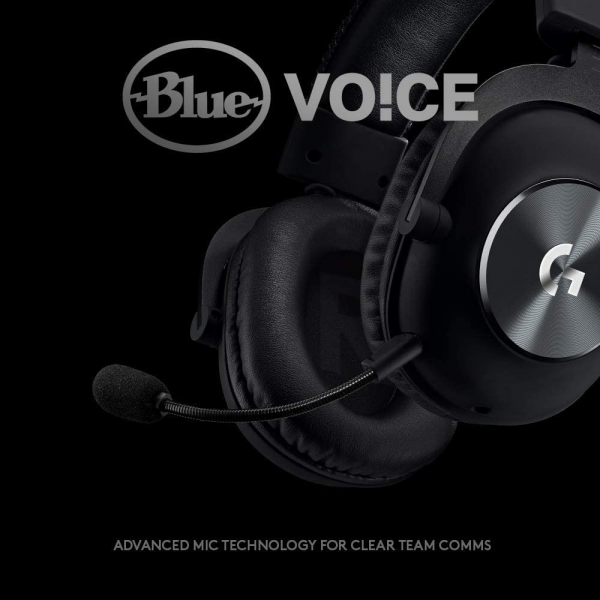
Ergonomics
The G Pro X is not content to follow the tradition of sobriety of the G Pro range from Logitech, far from the very common bling-bling in the world of products dedicated to gaming; it also represents for the Swiss manufacturer a leap forward in terms of manufacturing quality. In addition to the very attractive aluminum plates placed on the back of each headset, the forks are also now made of metal, and the general assembly is very beautiful. The impression of robustness is excellent, much better than that given by the all-plastic construction of the G Pro 2018.
With its 320 grams on the scale, the 2019 G Pro is not a featherweight, but it still manages to be forgotten on the head without great difficulty thanks to its very wide hoop. The ear cups also guarantee excellent comfort, being wide enough and deep enough to accommodate most ear flaps. There is just a small complaint to make about them: their articulation on the vertical axis is a little too short and rigid, and the distribution of the pressure around the ear can consequently lack a little homogeneity, depending on the morphology of each. Nothing too serious, of course.
The helmet is supplied with two pairs of pads, some covered with imitation leather, others with velvet. Each of the two materials offers a very pleasant touch. However, be warned that even with the imitation leather pads, the soundproofing provided by the helmet is quite low - and it is obviously even worse with the velvet. Headphones of "professional" or not, it is better to avoid taking it to a noisy LAN.
Logitech provides with its headphones a connection could not be more abundant. The 2 m "main" cable is a detachable cable with braided sheathing, including a remote control with analog volume control and microphone open / close switch. It is finished with a 3-point mini-jack that can be connected either directly to a headphone / microphone combo jack (for example that of a laptop or a joystick), or to the USB sound card provided - sound card which it - even works on computer and on PlayStation 4. And if you prefer to use the sound card of a fixed PC, you can then use the Y adapter to separate the headphone and microphone signals on two mini-jacks.
And that's not all, since the manufacturer finally provides a second cable dedicated to the connection to mobile devices - it is therefore shorter (1.5 m), sheathed in plastic, and provided with a micro remote control with a button. It therefore allows you to use the headset as a portable headset with hands-free kit function, without having to leave the boom installed. Do not throw any more!
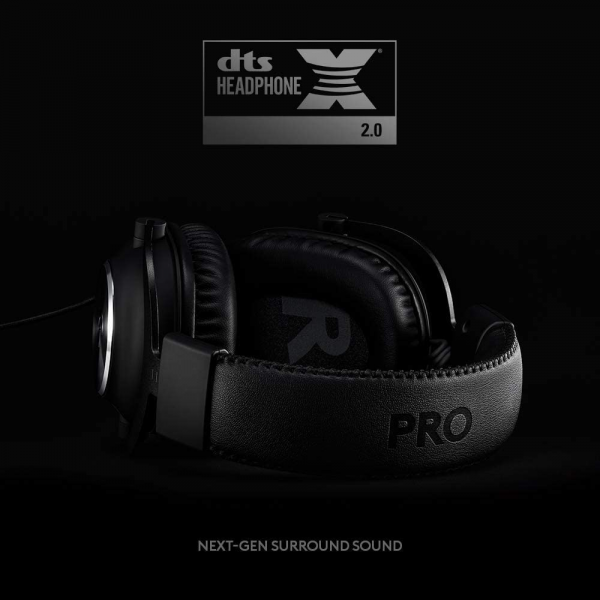
Software quality
On Windows and macOS, the G Pro X sound card works with Logitech G Hub software, the new unified control application for all of the manufacturer's gaming devices. Very stable and complete, the software is rather pleasant to use, even if its abundance of functionalities means that you have to plan a little adaptation time before you manage to use it perfectly fluently.
This software mainly gives access to the settings of the famous Blue VO! CE voice processing, to the activation and configuration of the virtual 7.1 DTS Headphone: X, as well as to a 5-band equalizer. Good point to note: the adjustment of said equalizer can be stored in "hard" in the sound card, and thus be preserved when it is connected to a new device - even when it is not itself compatible with the G app Hub, like a PlayStation 4.
As soon as it is installed, the application offers a fairly generous amount of default presets for the Blue VO! CE equalizer and treatments - which should be emphasized that they are generally very relevant. It is of course also possible to configure and save your own presets. Even stronger: if we agree to create an online account with Logitech, we are offered the opportunity to download additional presets configured by famous players from the esports scene! Let's not lie: the thing is more fun than really useful.
Finally, the software allows you to create a separate profile for each application installed on the computer. It is therefore possible to create, for example, a game-specific equalization profile, and let the G Hub automatically activate this profile when the game in question is launched. This can be eminently practical.
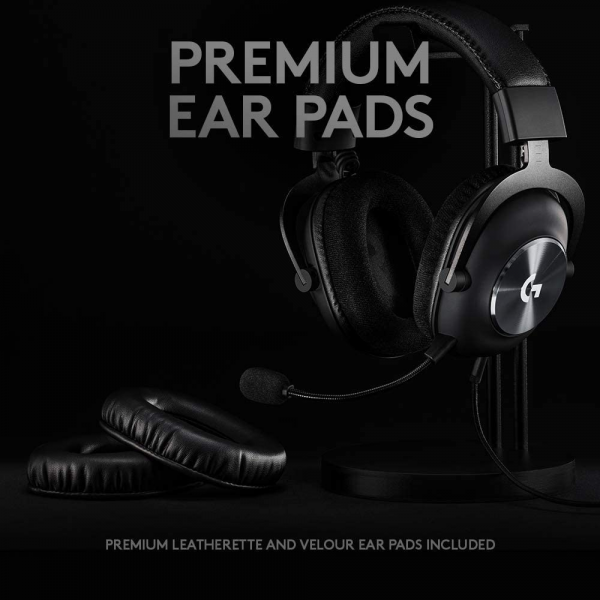
Audio
The G Pro X delivers very heterogeneous performances, insofar as they are drastically changing according to the bearings used. So much so that depending on whether you prefer faux leather or fabric, you can almost consider that we are dealing with two different helmets.
The helmet comes with pre-installed leather pads - which we can effectively consider as the preferred choice a priori for competitive players, to whom this helmet claims to be addressed. And the first auditory contact is then not flattering: we immediately hear a low half of the spectrum polluted by very strong colorings. This prevents them from creating any feeling of fullness and depth, especially as it adds a reactivity of the membranes far from being beyond reproach. The bass is certainly very present, but lacks impact and definition. When listening to music, this translates into serious instruments with diluted timbre and lacking in naturalness - on a piano, for example, the left hand sometimes gives the impression of playing on a plastic instrument. On the soundtrack of a game or a movie, we can especially note that the effects of the bass channel are quite rough, and that human voices sometimes take a slightly muffled and snoring turn.
Fortunately, things get a lot better when you replace the synthetic leather pads with the fabric ones. It is even frankly astonishing to see then the excessive accentuation, the coloring and the imprecision of the bass disappear completely! Instead, we take advantage of perfectly accurate bass, discreet but toned and chiseled.
Not everything is perfect, and it is this time in the mediums that things seem to spoil at first. The large peak centered at 1.5 kHz is also obvious to the ear which is so measured, and by default produces a frankly unpleasant "megaphone effect". Fortunately it is possible to reduce it by using the equalizer built into the G Hub application - but unfortunately not as much as one might have hoped. In question, the factor Q (bandwidth) far too high of the 3 central bands of this equalizer, which therefore prevents from really flattening the frequency response. If we can therefore largely get rid of the megaphone effect mentioned above, it is however impossible to completely eradicate the small excess of sharpness of the sound, especially audible on electric guitars or metallic sounds. Not everyone will necessarily see a defect, but people who are sensitive to this frequency zone or who like to listen to their music, their movies or their games at a fairly high volume could perceive a somewhat exhausting aggressiveness for the eardrums.
Let us conclude with a final word on DTS Headphone 7.1 virtual spatialization: X v2.0, which we now know well for having already encountered it on many audio gaming products. If it certainly succeeds in creating a fairly convincing sensation of sound space, it unfortunately does so at the cost of overly present artificial room effects, which distort the original sound signal too much for the overall rendering to be fully convincing - we are far from what Dolby Atmos for Headphones offers, for example.

Microphone
The microphone was already the strong point of the G Pro 2018, and it is still the case here. The "raw" voice recording offered is already excellent: the speech is reproduced with great clarity, the timbre of the voice is perfectly respected. The high sensitivity of the microphone makes it possible to reach a largely sufficient sound level without having to amplify the signal or push the voice, while its great directivity prevents noises around to invite themselves to the party. Finally, the windscreen erases the breaths and the plosives with very honest efficiency.
But it is of course Blue VO! CE treatments that take it all to the next level. They include first of all a parametric equalizer with certainly only 3 bands, but where the width of the bands (Q factors) is adjustable, which therefore allows you to shape the timbre of the voice with still surprising precision. In addition, 6 "studio" effects are available, and they also offer a frankly impressive quality of rendering: a low-cut filter (to eliminate a little more breath and plosive noise), a de-noiser (elimination of background noise), a de-esser (reduction of sibilance), a noise-gate, a compressor (reduction of the dynamic range to avoid excessive volume differences) and a limiter (to avoid saturation).
By playing with all this, it is really possible to form a sound of voice approaching that of an entry-level home studio equipment. We obviously stay at a good distance from a true "professional" quality; but beyond the simple communications in play, budding videographers can perfectly content themselves with it for a stream or the voiceover of a video. Coming from a headset sold for less than 150 €, there is something quite remarkable.
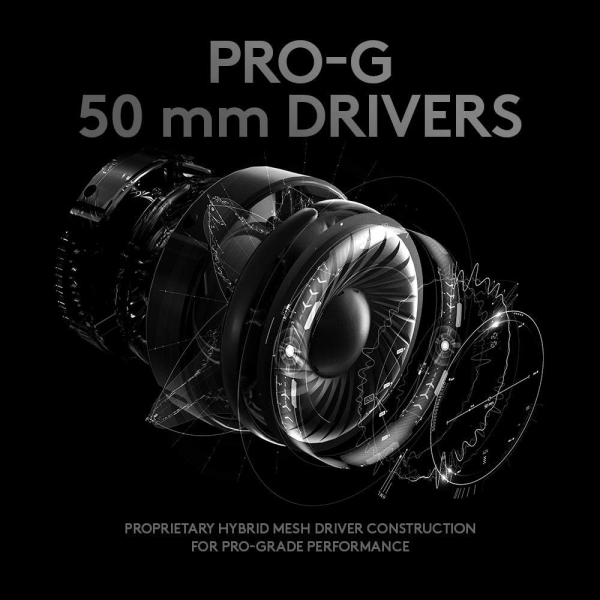
Conclusion
The G Pro X is satisfied with satisfactory performance, albeit imperfect, in terms of its sound reproduction quality. But it stands out brilliantly from its competition thanks to its microphone, one of the very best on gaming headsets, and the remarkable efficiency of its Blue VO! CE voice processing. Even more than competitive players, it is above all apprentice streamers and budding videographers that we recommend this helmet. Such a quality of voice recording by simply using a headset sold for less than 150 €, that's a golden affair for them.
